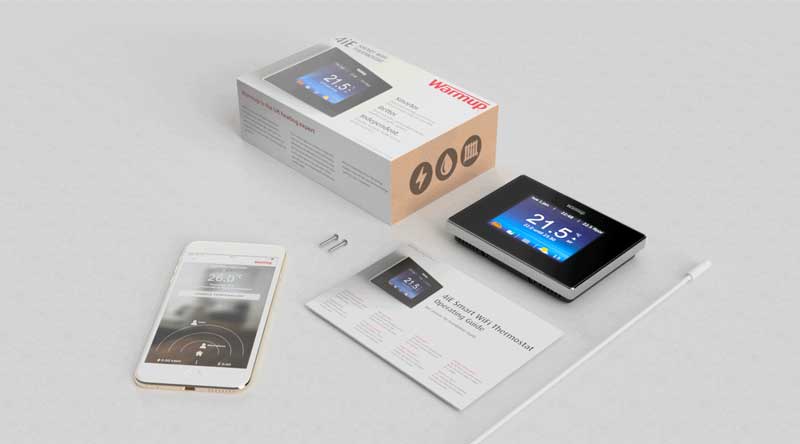Home
/
Programming
/
Terra WiFi Thermostat
How to Resolve the ER2 Message on the Terra Smart WiFi Thermostat?
When the thermostat reads “ER2,” the floor sensor is installed in the incorrect terminals. Your electrician can swap the terminals that the sensor probe is attached to, or you can swap the probe usage in your thermostat settings to resolve the error.
If you would like to resolve the ER2 Message on the Terra Smart WiFi Thermostat, watch the video, or read the instructions down below:
Click here to view our YouTube Channel
Instructions for Resolving the ER2 Message
Background Information
On the back of the Terra Thermostat, there are 3 terminals for the sensor probe wires:
- P1 is the control.
- PC is the constant.
- P2 is the limit.
The standard, recommended sensor placement is in P1 and PC. If the sensor was, instead, installed in PC and P2, you will receive an “ER2” error on your Terra Thermostat.
Step 1: Getting to the Thermostat Application Setting
To resolve this without rewiring the thermostat, follow the instructions below:
- Press the Check Mark Icon to access the settings menu.
- Use the Up and Down Arrows to move to the Settings (Gear) Icon and press the Check Mark.
- Use the Arrows to move to the Thermostat Application Icon (thermometer) and press the Check Mark.
Step 2: Updating Your Thermostat Application Settings
In this menu, the thermometer icon represents the “control” sensor (P1) and the shield icon represents the “limit” sensor (P2). By default, this will be set to thermometer icon as “2” and shield icon as “1.”
- Press the Up Arrow to swap the sensor probe usage numbers.
- Press the Check Mark to accept.
- You will then see a House Icon with a number underneath.
- If the number under the House Icon is “02,” press the Check Mark to accept.
- If the number under the House Icon is not “02,” use the Arrows to select “02” and then press the Check Mark to accept.
- The next screen will give you the option to select Fahrenheit or Celsius. Select your preference with the Arrows and press the Check Mark to accept.
- The next screen will show the sensor probe type. This is set to 10k by default and is what ships with the thermostat. Do not change this setting and press the Check Mark to accept.
Step 3: Confirming and Returning to the Home Screen
You will, then, see a green check mark on the screen, indicating that your settings have been saved. When you see this icon, you can press the “X” Icon until you return back to the Home Screen. The “ER2” Error should now be gone from your Terra Thermostat.
Additional Assistance
If you are experiencing any difficulties or encountering any issues while attempting to resolve the “ER2” Error from your Terra Smart WiFi Thermostat, rest assured that we are here to assist you. Our dedicated support team is ready to provide you with the necessary assistance to resolve any problems you may be facing.
To access our support services, simply reach out to us at (888) 927-6333.


![Thumbnail [200x250]](/wp-content/uploads/Indoor-Systems-Page-Image.png)
![Thumbnail [200x250]](/wp-content/uploads/image-13.png)
![Thumbnail [200x250]](/wp-content/uploads/Projects-Image.png)